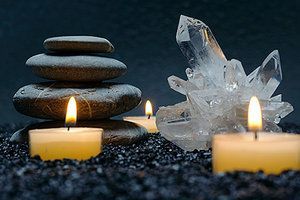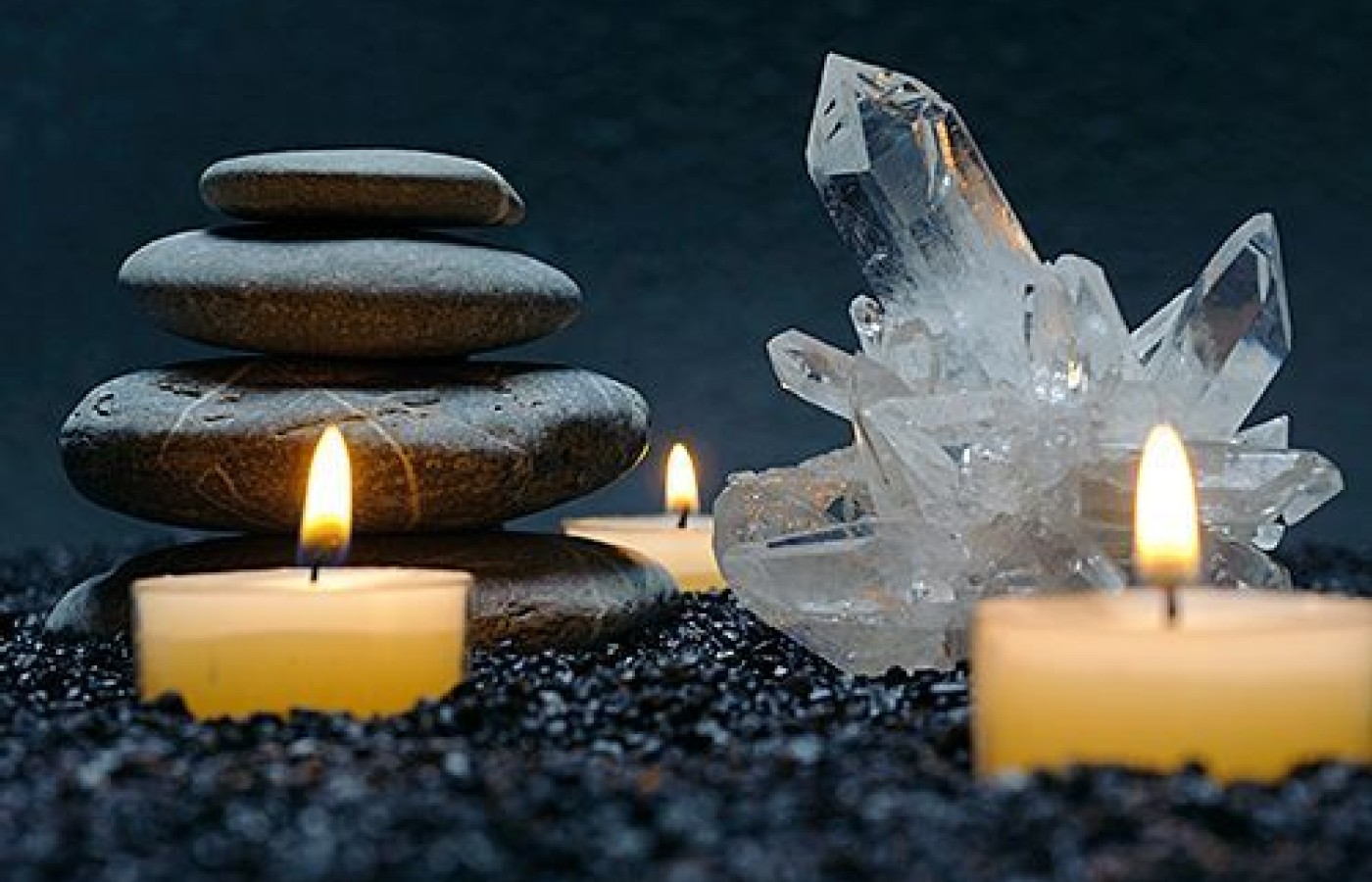Whether you accept it, avoid it or live somewhere in between, insurance coverage has become a defining issue for our profession. Patients increasingly expect to use their benefits, practitioners want to be compensated fairly for their time and expertise, and the system itself remains – at best – fragmented. The encouraging news is that coverage has expanded in meaningful ways. The challenging news is that reimbursement, across the board, remains inadequate.
The Art of Creating a Healing Space
I always advise my graduates to examine their group practice or treatment rooms with fresh eyes after they leave my CE workshops. I tell them, "Ask yourselves - is your space qi filled, welcoming and healing? Or is it cold and clinical?" This is especially important if the practice is geared to pediatrics. "Do your young clients run into your space with joy, or hang around the door?" I often share the example of Michel Cohen, MD, a French born pediatrician in New York City who actually designed and built his child-friendly and fun loving waiting area and consulting rooms, complete with koi fish in round porthole like tanks, a colorful front door, low shelves, fun containers, and plenty of activities.
I thought about all of the above recently when I consulted a new MD for a routine physical. I was disturbed, not only by the cramped, impersonal space that seemed like a storeroom for files, but by the way she kept her back to me while asking questions as she recorded my answers on a laptop. That was my first and last visit. As an Asian Bodywork Therapist (ABT) and teacher for more than three decades, was I being too critical, judging a physician not on her skills, but on her body language and cramped space?
Best and Worst Examples
I decided to poll a number of colleagues in both acupuncture and ABT and found a general agreement about the importance of environment, body language and attitude to promote trust and openness to complement a practitioner's skills. Melissa Light LAc AOBTA-CP explained, "my worst example was a western ob/gyn practice that had old carpets covered in rugs that were well worn and furniture that was covered in equally well worn upholstery. I just kept on thinking this was the best place to nurture an environment for germs to thrive."

Alighta Averbukh LAc adds, "the worst is when therapists are chaotic and – while they work on you - their cell phone buzzes constantly or they talk about their own problems. Or you discover bloody cotton balls and needles on the floor."
All those polled commented on the harmful effects of chemical smells, synthetically scented candles, and chemical cleaning solutions. Some even emphasized the importance of washing clinic linen themselves in hypoallergenic detergent instead of using a laundry service.
Isabelle Chen-Angliker MD (Switzerland), LAc, AOBTA-CP, who runs an integrative practice, listed the items her clients told her they disliked in treatment rooms: sinks, mirrors, white tile floors, and crackling, flickering neon lights directly overhead. By contrast, Dr Isabelle stresses the importance of daylight, a Himalayan salt lamp, and a comfortable work table padded with a wool cover and cotton sheets. She echoes several practitioners who shun a room crowded with cables and electronics. Oversized, meaningless paintings and huge shelves are equally taboo.
Other Practical Tips
One of Austin's best known teachers of acupuncture and Feng Shui, too modest to be identified for this column, said, "the ceiling of the room should be flat and parallel to the position of the client. An ascending or angled ceiling (as in an attic) can affect the proprioception of the client." He adds, "never place tables in proximity to a fuse box or major power outlets when possible – consider electromagnetic pollution in rooms (such as proximity to fans, heaters etc). Needles are literally antennae into the body. Also, clients should be able to see all entryways into the treatment room so the nervous system is never on alert."
Janet Cook, LAc, who integrates Shiatsu in her practice, talks about the importance of an air filter and natural fabrics and advises her clients to avoid all textiles treated with formaldehyde. "Clients make the mistake of buying a new mattress as they believe it will ease backpain. But if its not organic, it releases harmful chemicals." Janet also advises clients who suffer from allergies, to use a good air filter in the bedroom, and to select washable rugs. On a lighter note, Janet has a mobile in five element colors hanging above her worktable, a simple touch that spins qi. Clients love it.
Suzanne Rittenberry LAc, who integrates Tuina in her practice, praised AOMA's open tent style student clinics held at Kerrville, Texas during the music festival as, "good qi from fresh air, with spaces divided simply by Tibetan flags and bowls." Suzanne's own clinic is a late 70s two story building in Austin that was once a garden center. She bought it when the business closed and moved it onto the property where she lives in the midst of a lovely wildflower meadow. It has four therapy rooms, and is beautifully quiet with stunning views of hill country wildflowers in spring. Therapists practice Qigung outside, drawing energy from the surrounding pecan and oak trees.
Louis Knox, AOBTA-CP, who practices Zen Shiatsu and teaches Tai Chi, says, "the best therapy room should look like someone's home with art work on the walls. The worst clinic has empty walls and only technical equipment."
Extra Care for Clients With PTSD
Kim Layne, LAc, AOBTA-CP, director of integrative medicine at the Samaritan Counseling and Pastoral Center in Austin, including the Hope for Heroes program for military vets experiencing PTSD, said she lights unscented candles during cold, grey or rainy weather to bring a balance of warmth, light and fire to the room. When she holds a community clinic (tables lined up in an open room), she says, "it's possible our space is comfortable for those veterans and service members who are used to sharing sleeping quarters. I've frequently had multiple people snoring away in there." Kim feels, in this context, it's helpful to avoid screens or dividers between tables so there is no fear or suspicion around a sudden noise. "Clients can see what's going on in the room if they start to feel anxious about something happening in the space next to them."
Marianne Steele AOBT-RI, who practices ABT on several U.S. military bases in Germany, is equally mindful of the dramatic effect of noise around PTSD clients. Some jump off her worktable if a door slams in the corridor outside her treatment room. Often, she has to doublecheck the vicinity to make sure doors and windows are secure or wont slam in a wind while she is working.
Art and Views
Which brings me to my own ABT room. Most of the art and framed photographs on the walls were done by appreciative clients or graduates. One artist/client of mine in New York City created a large collage of a calendar with each month represented by a harlequin-like figure being lifted out of a dark background, after she claimed ABT helped break her creative block. I have used her dramatic fire/water collage in my Five Element classes. My walls also display pen and ink drawings by Karen Greathouse, Latina artist and LAc, who uses an eclectic mix of her own paintings in her treatment room.
My walls also hold framed photographs of Monet's garden near Paris, taken by Dr. Lise Ste-Marie of Montreal, one of my Shiatsu graduates. I include my own photos of peace symbols in different contexts, on the back of a lady's jacket on a Boston subway, and painted on a rock on a Maine beach. To honor the Japanese origin of my Zen Shiatsu training, I include a hand painted kabuki scene I found in an antique market. Books line one entire wall, surrounded by large potted plants. And two windows overlook my garden that is full of trees, shrubs and huge cacti.
Views are important. A feature I appreciate in many Swiss hospitals with their glorious views of lakes, mountains and gardens, even in city scapes. The Sanatorium Kilchberg downlake from the city of Zürich – is a psychiatric clinic set in magnificent rolling gardens overlooking the lake. Patients can not only stroll these glorious surroundings, but many are involved in work programs, helping prune, seed, mow and plant or pick, alongside the gardeners, itself a very therapeutic exercise. Similarly, the Dell Childrens Hospital in Austin boasts healing, child friendly courtyards and gardens with native plants and stone and even a cascading waterfall opening to an outdoor cafe. The courtyards are enhanced by different colors and wavy pathways in a large quad at the core of the hospital overlooked by several floors of rooms and rehab areas with plateglass windows.
Finally, I had a chance recently to wander around a series of formerly crumbling 19th century farm buildings and barns converted into a residential rehab center north of Vilnius, Lithuania. The network of buildings, therapy rooms, private rooms, communal eating areas and a center for concerts or meetings, makes wonderful use of natural stone and wood. Windows open to the surrounding woods, grassy slopes and neighboring farmlands. Between treatments, patients who are mobile can meander along meditative paths in this harmonious retreat.
To end on a sobering note, Yuxia Qiu MD (China), LAc, who also teaches Qigung and Medical Qigung in New York City, made the point that beyond good airflow, good color, good walking space and music/pleasant sound, the art of a healing space can be whittled down to a simple truth. Namely, the good healing intention of the practitioner and the connection between practitioner and client.



